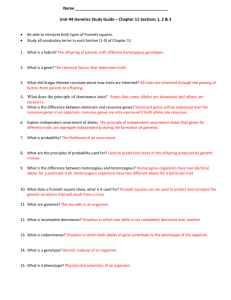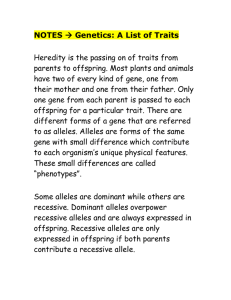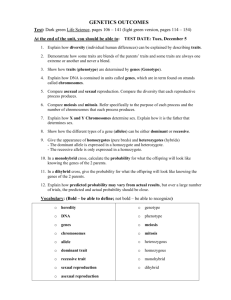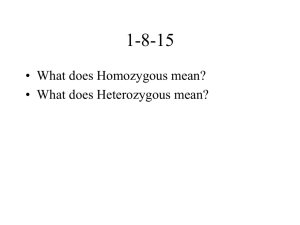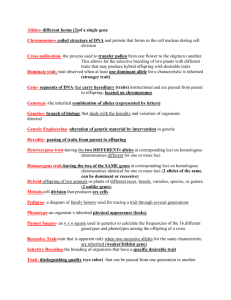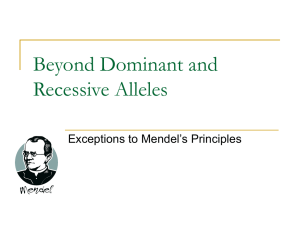Genetics is the scientific study of heredity
advertisement
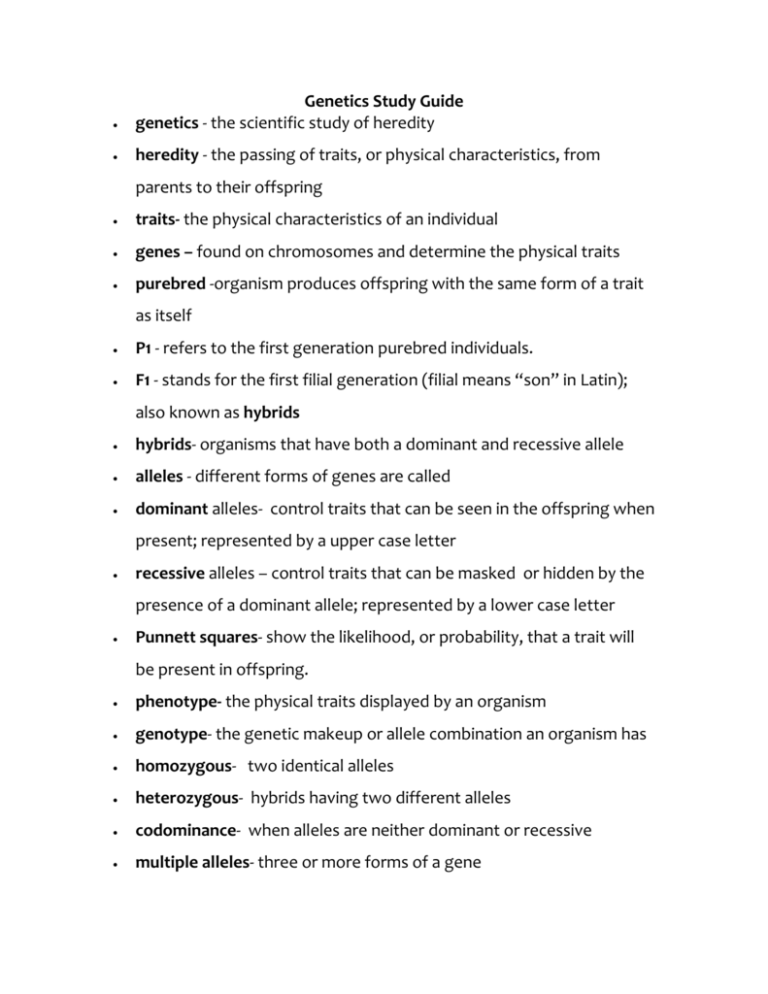
Genetics Study Guide genetics - the scientific study of heredity heredity - the passing of traits, or physical characteristics, from parents to their offspring traits- the physical characteristics of an individual genes – found on chromosomes and determine the physical traits purebred -organism produces offspring with the same form of a trait as itself P1 - refers to the first generation purebred individuals. F1 - stands for the first filial generation (filial means “son” in Latin); also known as hybrids hybrids- organisms that have both a dominant and recessive allele alleles - different forms of genes are called dominant alleles- control traits that can be seen in the offspring when present; represented by a upper case letter recessive alleles – control traits that can be masked or hidden by the presence of a dominant allele; represented by a lower case letter Punnett squares- show the likelihood, or probability, that a trait will be present in offspring. phenotype- the physical traits displayed by an organism genotype- the genetic makeup or allele combination an organism has homozygous- two identical alleles heterozygous- hybrids having two different alleles codominance- when alleles are neither dominant or recessive multiple alleles- three or more forms of a gene chromosomes - composed mostly of DNA and carry genes DNA - made up of nitrogen bases: adenine (A) connects to thymine (T) guanine (G) connects to cytosine (C) sex-linked genes – carried on the sex chromosomes, X and Y meiosis- process in which a parent cell divides to produce daughter cells with half the number of chromosomes


